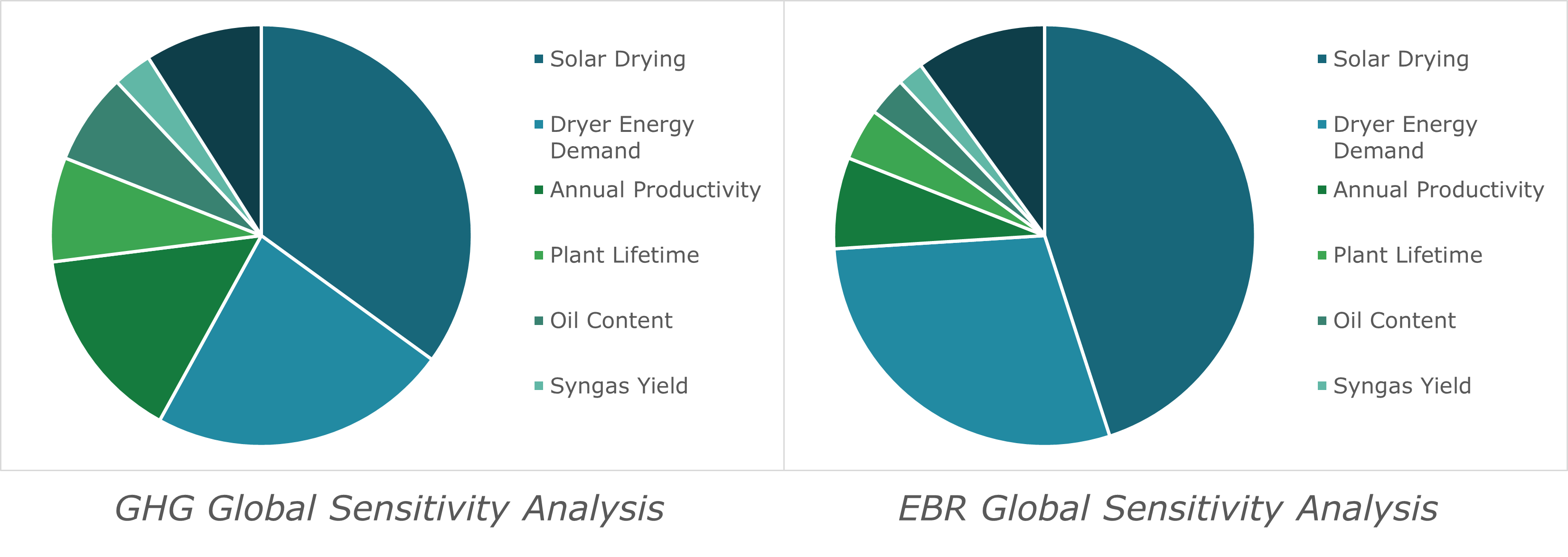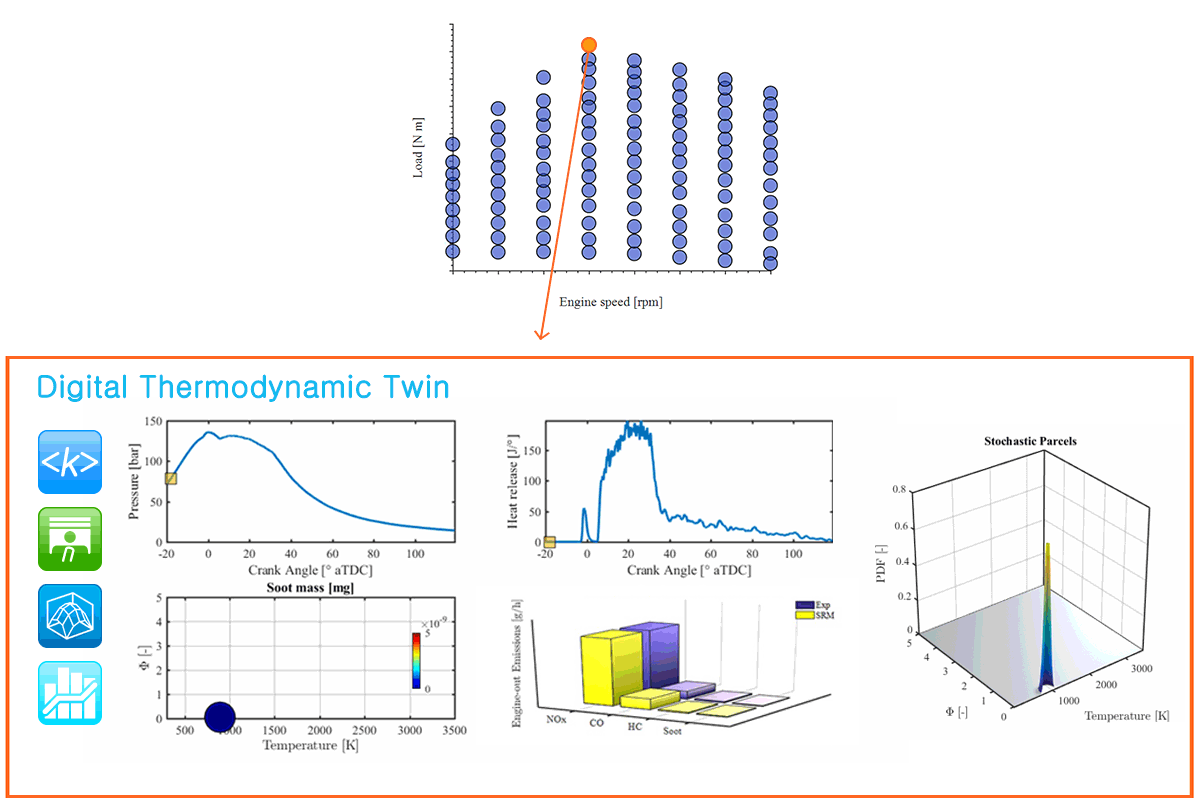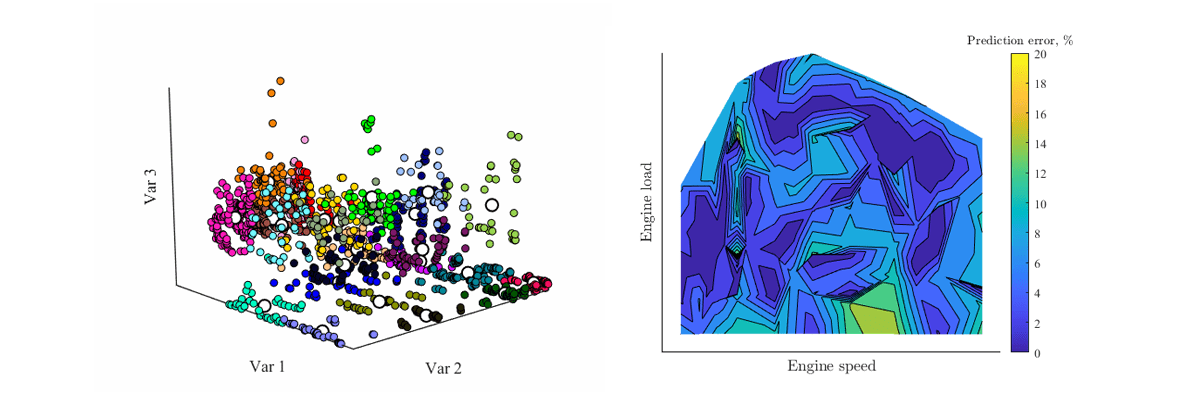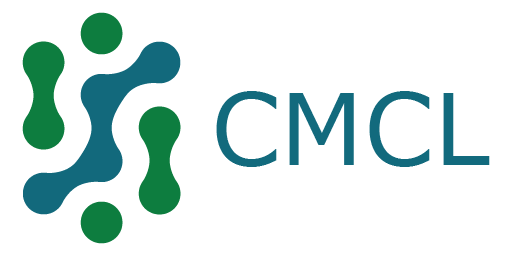Generating and using data has become an inseparable part of our everyday lives. Emergence of “smart” technologies has also added yet bigger sources/sinks for data, with most of the data being generated and consumed by machines. This has changed the data landscape dramatically, putting forth a challenge to handle (and make sense of) large datasets originating from various sources i.e. sensors, models, software, or a combination of these. One of the most convenient methods to deal with this challenge is the application of Machine Learning (ML) methods via introduction of surrogate models and classification.
Our Model Development Suite (MoDS) software offers a range of surrogate model generation techniques. For example, High Dimensional Model Representation (HDMR) technique is applied here for generating a surrogate model as a function of a high-dimensional (~80-100) input variable space, for a renewable algae-derived fuel production plant. HDMR algorithm provides the associated global sensitivities for indicators such as the greenhouse gas (GHG) footprint and energy balance ratios (EBR).

In another example, Deep Kernel Learning (DKL) that is a composition of a deep neural network with a Gaussian Process (GP) is applied to train and validate a surrogate model for vehicular emissions.
MoDS also offers the ability for Hyper-Parameter Optimisation (HPO), i.e. for auto-tuning the parameters intrinsic to the DKL technique. Once generated, these data-driven models could be used as stand-alone “executable” models through MoDS API in a range of third-party software. Read about MoDS toolkit here.
Digital engineering workflows that combine physics-based or physico-chemical simulation with statistical or data-driven techniques offer predictive and extrapolative benefits of the detailed simulations along with the performance-enhancing modelling and analysis capabilities.
See the IC engine use case below involving such an integrated workflow:
Engine testing and calibration is a time-intensive process based on measurement campaigns that impact the time-to-market, associated costs, and the underlying CO2 footprint of the process.
We have combined the synergistic strengths in predictive physics-based models with high-performance statistical analysis in the form of a digital engineering workflow to enhance your in-house measurement campaigns towards a more cost-effective development. The workflow seamlessly integrates our toolkits MoDS, SRM Engine Suite, and CMCL Explorer, enabling model calibration (parameter estimation), validation (against new data), and surrogate generation for engine performance, combustion characteristics, gas phase emissions (CO, HC, NOx) and particulates (PM and PN).

The workflow is applicable to virtually all engine operating modes, i.e. Compression Ignition (CI), Spark Ignition (SI) as well as advanced low temperature combustion concepts. A so-called “digital thermodynamic twin” is developed for the engine using high-fidelity physics-based models, while embracing new technologies in Machine Learning and Deep Learning to account for the intrinsically high-dimensional nature of engine calibration.

Once fully realised, the workflow helps reduce the reliance on measurement data in engine calibration process by augmenting the measurements data with digital equivalents without sacrificing much of the accuracy. While the digital workflow runs fully parallelised on a standard multi-core desktop computer, HPC technology can also be leveraged to reap bigger time savings.

Contact us to know more about how we can help you in your engine calibration process.



